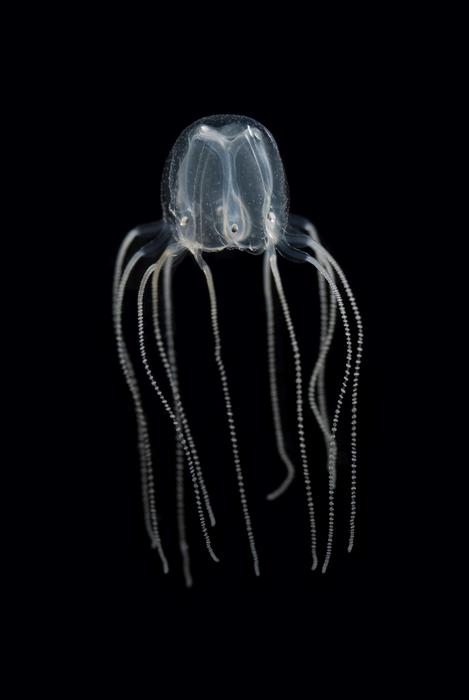Complex organisms, such as humans or mice, have a central brain in order to carry out tasks and use problem-solving skills. Up until recently, scientists were under the impression that a centralized brain was required in order to execute advanced learning techniques. However, new research suggests that that’s not the case at all. Caribbean box jellyfish, smaller than your index finger, have been shown to use past experiences in order to better their chances of survival.
In Current Biology, a peer-reviewed scientific journal, scientists trained Caribbean box jellyfish to “learn to spot and dodge obstacles”. This is due to the double-dozen eyes immersed into their body, which is useful for navigation in their natural habitat, mangrove swamps. Jan Bielecki, a neurobiologist at Kiel University, says the trick to teaching a jellyfish a new behavior is to “leverage its natural behaviors, something that makes sense to the animal, so it reaches its full potential.” So Bielecki created an artificial habitat, and allowed the jellyfish to acclimate to their environment. In 7.5 minutes the box jellyfish went from bumping into walls habitually, to quadrupling the amount of correct rotations needed to avoid wall collisions.
In order to get to the root of how this incredible feat of biology is even possible scientists decided to just look at the main part of the associative learning process for Caribbean box jellyfish, the rhopalia. The rhopalia is a part of the jellyfish’s central nervous system, responsible for sensing light and movement. In order to test how the rhopalium of box jellyfish is able to sense and avoid danger, they gave weak electrical stimulation to the rhopalia every time a “simulated collision” occurred. Over time, when these simulated collisions were commonplace for the jellyfish, it learned to send signals responsible for collision avoidance. As a result, scientists could deduce that a combination of both mechanical and visual stimuli is required in order to perform associative learning.











